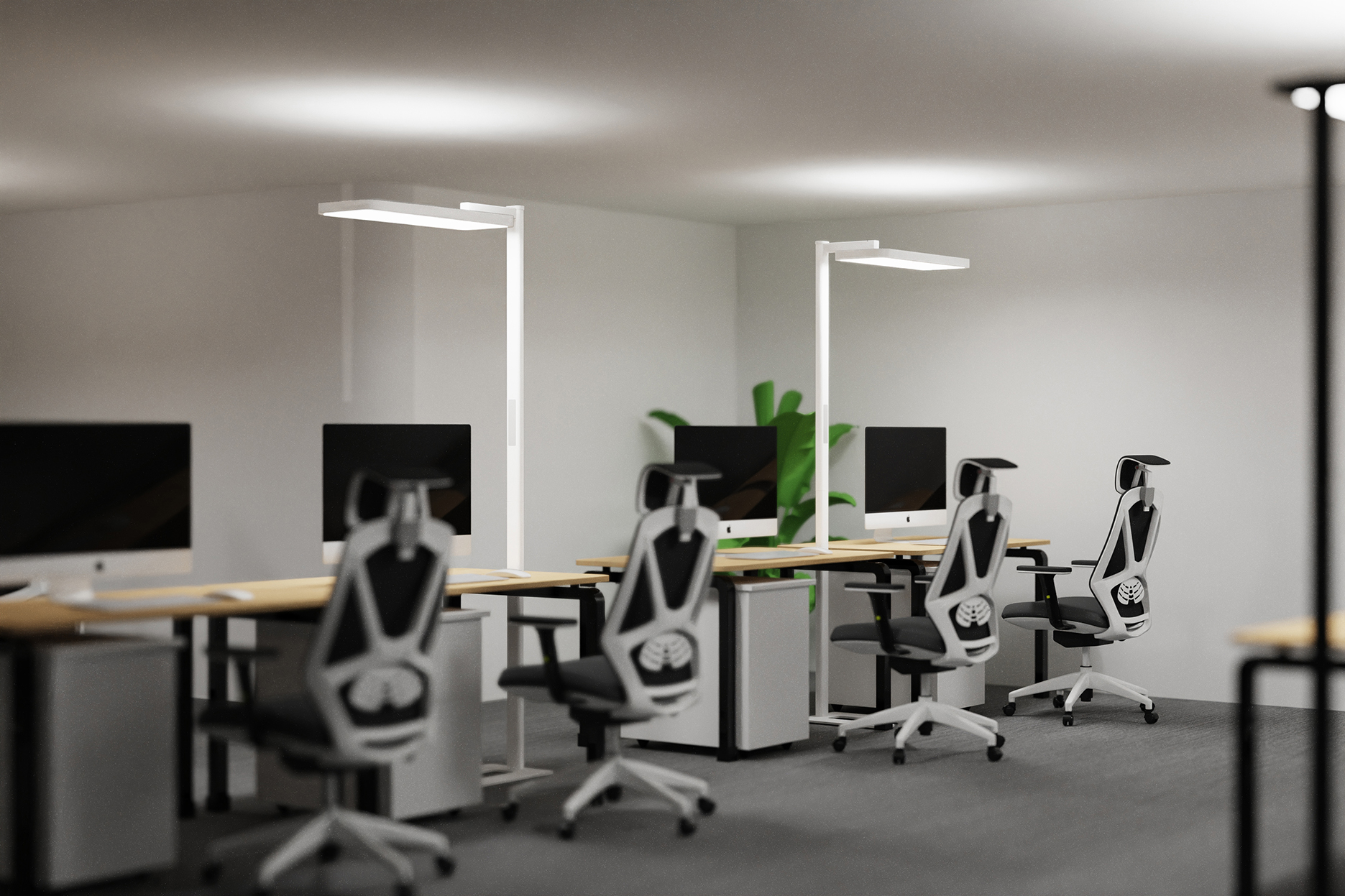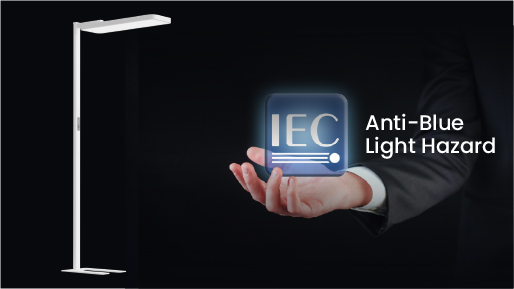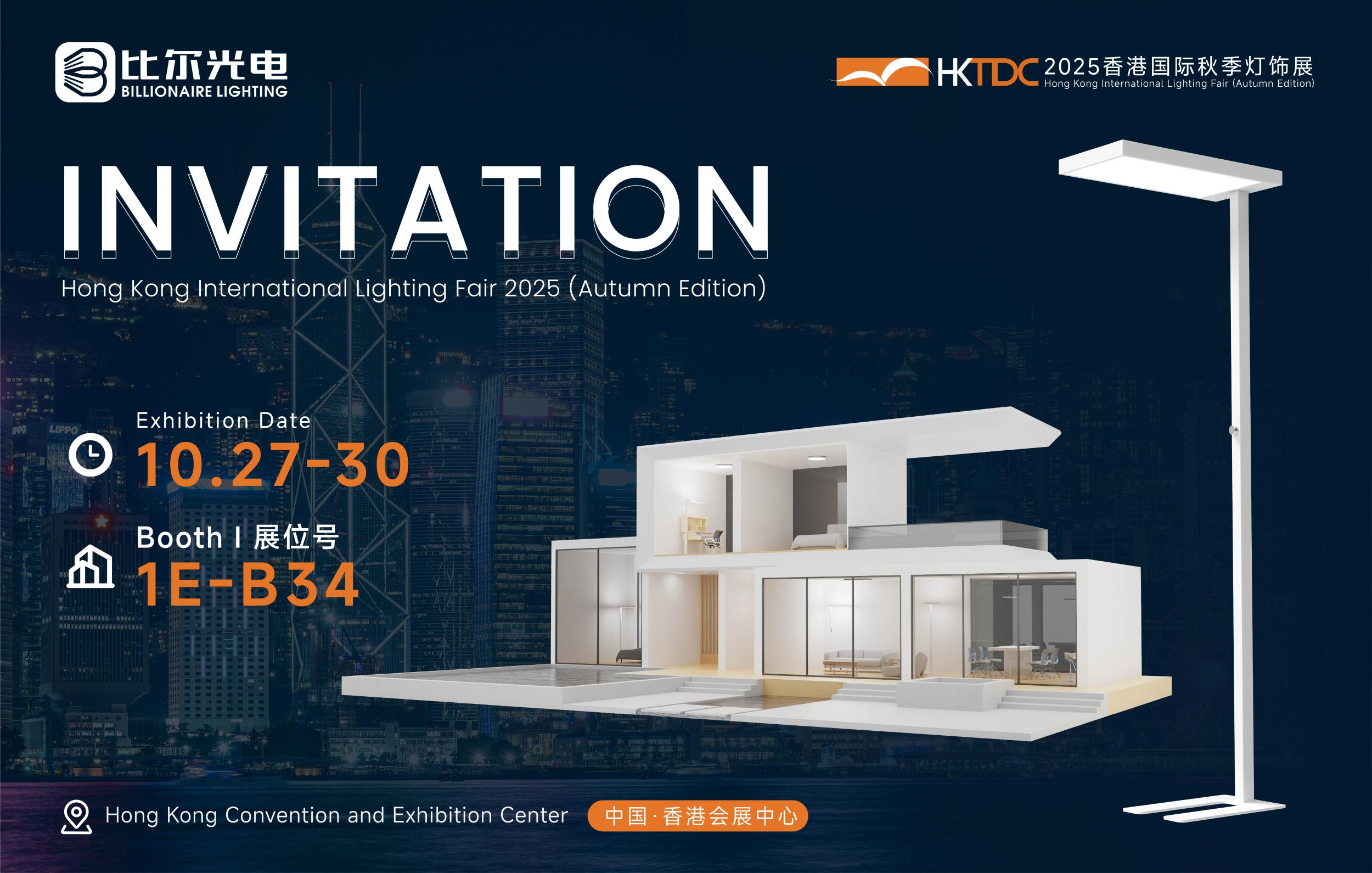Introduction
In the contemporary office landscape, lighting is a fundamental aspect that significantly impacts the functionality, comfort, and overall efficiency of the workspace. Office desk luminaires, in particular, play a pivotal role in this regard. They are not merely sources of illumination but essential tools that can enhance employee performance, reduce eye strain, and contribute to a positive work environment. A well - chosen and properly installed office desk luminaire can transform a mundane work area into a productive and inviting space.
Types of Office Desk Luminaires
Task - Oriented Desk Lamps
Task - oriented desk lamps are designed with the primary objective of providing intense, focused light for specific work tasks. These lamps are indispensable in offices where employees engage in activities that demand high levels of visual acuity. In a graphic design studio, for instance, designers require a desk lamp that can direct a bright, concentrated beam of light onto their work. This allows them to perceive the finest details in their illustrations, color palettes, and digital images. The adjustable arms and heads of such lamps enable precise positioning, ensuring that the light falls exactly where it is needed, minimizing glare and shadows.
Similarly, in a legal office, lawyers rely on task - oriented desk lamps to clearly read through complex legal documents, contracts, and case files. These lamps often utilize high - quality bulbs, such as LEDs with a high Color Rendering Index (CRI). A high CRI ensures that colors are accurately represented, which is crucial in fields like design, printing, and any work involving color - sensitive materials. In an office setting where employees are constantly typing on keyboards or using computer mice, a task - oriented desk lamp can be positioned to provide optimal lighting for these tasks, reducing the likelihood of errors due to poor visibility.
Ambient Lighting Desk Lamps
Ambient lighting desk lamps serve a different but equally important function in the office. Their role is to create a general, comfortable illumination in the workspace, contributing to the overall mood and atmosphere. In an open - plan office, where multiple workstations are grouped together, ambient desk lamps can help soften the harshness of overhead lighting. They emit a soft, diffused light that fills in the gaps between the main light sources, reducing the contrast between lit and unlit areas. This results in a more balanced and inviting environment.
For example, in a co - working space, ambient desk lamps on each workstation can make the area feel less clinical and more conducive to collaboration. During breaks or informal meetings, the soft, warm light from these lamps can create a relaxing atmosphere, allowing employees to unwind briefly before returning to their tasks. In an office with a modern, minimalist design, ambient desk lamps with sleek, understated designs can blend seamlessly with the decor, adding a touch of elegance without overwhelming the space.
Dimmable Desk Lamps
Dimmable desk lamps offer a high level of flexibility in an office environment. The ability to adjust the light intensity according to the task at hand or the time of day is a significant advantage. In the morning, when employees are fresh and need a bright light to kick - start their work, the lamp can be set to its maximum brightness. As the day progresses and the eyes may start to tire, the light can be dimmed to a more comfortable level.
During video conferences, dimming the lamp can help reduce glare on the computer screen, ensuring better visibility for the participants. In a shared office space, dimmable desk lamps also allow employees to customize the lighting to their individual preferences without disturbing their colleagues. This feature is particularly useful in offices where employees have different visual sensitivities or work patterns.
Adjustable - Angle and Height Desk Lamps
The versatility of adjustable - angle and height desk lamps makes them highly suitable for the dynamic nature of office work. In a home office where the user may alternate between sitting at a desk and using a standing desk, a lamp that can be easily adjusted to different heights becomes essential. The adjustable angle feature is equally valuable for tasks that require precision.
In a jewelry - making or watch - repair business operating within an office space, workers need to direct the light at specific angles to focus on small, intricate details. In an office with a frequently changing layout, an adjustable desk lamp can be quickly adapted to new furniture arrangements. This adaptability ensures that the lamp can always provide the optimal lighting, regardless of the workspace configuration.
Design Considerations for Office Desk Luminaires
Ergonomics
Ergonomics is a crucial factor in the design of office desk luminaires. A well - designed lamp should not cause discomfort or strain during use. The position of the on - off switch and the dimming control, if applicable, should be easily accessible. Lamps with touch - sensitive controls are becoming increasingly popular as they offer a more user - friendly experience, especially for those with limited dexterity.
The adjustable parts, such as the arm or the height - adjustment mechanism, should operate smoothly and not require excessive force. The weight of the lamp is also an ergonomic consideration. A lightweight lamp that is still stable on the desk is ideal, as it can be easily moved around if needed. In an office where employees may need to reposition their workstations frequently, an ergonomic desk lamp can enhance productivity by reducing the effort required to adjust the lighting.
Style Compatibility
The style of the office desk luminaire should seamlessly blend with the overall decor of the office. In a modern, minimalist - designed office, a sleek, contemporary desk lamp with clean lines and a simple color scheme would be a perfect fit. It can add a touch of sophistication to the workspace without overwhelming the other design elements.
On the other hand, in a more traditional - style office, a desk lamp with a classic design, perhaps made of wood or brass, would be more appropriate. The lamp's style can also contribute to the brand image of the company. In a creative agency, a unique and artistic desk lamp can enhance the company's reputation for innovation and creativity. The shade of the lamp also plays a role in style compatibility. A white or light - colored shade can help diffuse the light evenly, while a colored or patterned shade can add a decorative element, but it should be chosen carefully to ensure it doesn't clash with the office decor.
Light Output and Color Temperature
The light output of an office desk luminaire is measured in lumens. For task - oriented work, a higher lumen output, typically between 1500 - 2000 lumens, is recommended to ensure sufficient brightness for detailed tasks. However, for ambient lighting, a lower lumen output, around 800 - 1200 lumens, is more suitable to create a comfortable atmosphere.
Color temperature is another important aspect. Cool - white light, with a color temperature of 4000 - 5000K, is ideal for tasks that require concentration, such as writing, programming, or data analysis. It provides a bright, clear light that helps keep the mind alert. Warm - white light, with a color temperature of 2700 - 3000K, is more suitable for creating a relaxing atmosphere, such as during breaks or in the late afternoon when the eyes may be fatigued. Some advanced desk lamps now come with adjustable color temperature options, allowing users to switch between cool and warm light depending on their needs.
Durability
In an office environment, where the desk lamp is likely to be used frequently and may be subject to some wear and tear, durability is essential. The materials used in the construction of the lamp should be of high quality. A lamp with a metal body is generally more durable than one made of plastic, as it can withstand accidental knocks and bumps. The joints and adjustable parts should be well - constructed to ensure they don't loosen over time.
In a busy office, a durable desk lamp can save the company money in the long run by reducing the need for frequent replacements. It also provides a sense of reliability for the employees, knowing that their lighting source will not malfunction during important work tasks. Additionally, a durable lamp is more environmentally friendly as it reduces waste associated with frequent disposal and replacement.
Installation and Placement of Office Desk Luminaires
On the Desk
The most common placement for an office desk luminaire is directly on the desk. When placing the lamp on the desk, it should be positioned in a way that it provides optimal lighting for the work area. For right - handed individuals, placing the lamp on the left - hand side of the desk can help reduce shadows when writing or using a computer mouse. For left - handed people, the opposite is true.
In a cubicle - based office, the lamp should be placed in a position that doesn't block the view or create a disturbance for colleagues. In a home office, the lamp can be placed in a way that complements the overall layout of the room and the user's work habits. For example, if the user often reads books or documents while sitting in a particular corner of the desk, the lamp can be placed to illuminate that area effectively. The lamp should also be placed at a height that doesn't cause glare when looking at the computer screen or other work materials.
Near the Computer Screen
In an office where computer work is predominant, placing the desk luminaire near the computer screen requires careful consideration. The lamp should be positioned to avoid glare on the screen. A lamp with a shielded or angled shade can be used to direct the light away from the screen. If the lamp is too bright or is placed at the wrong angle, it can create reflections on the screen, making it difficult to see the content.
In some cases, using a task - oriented desk lamp with a narrow beam that can be focused on the keyboard and documents, while relying on the computer's built - in backlighting for the screen, can be an effective solution. This way, the user can have sufficient light for typing and reading without compromising the visibility of the computer screen. Additionally, some modern desk lamps are designed with anti - glare features, such as special coatings on the shade or diffusers that evenly distribute the light to minimize reflections.
In a Reading or Writing Area
If there is a dedicated reading or writing area on the desk, a desk luminaire should be placed to provide focused light for these activities. In an office that deals with a lot of paperwork, such as a financial or administrative office, a lamp placed directly over the area where documents are being read or written can significantly improve readability.
The lamp should be adjustable to ensure that the light is at the right angle to minimize eye strain. In a creative writing office, a well - placed desk lamp can create a conducive environment for inspiration. The soft, warm light can set a mood that helps the writer get into the right frame of mind. In addition, for those who need to take handwritten notes during meetings or while on the phone, a properly placed desk lamp can make the writing process more comfortable and accurate.
Maintenance and Cost - Effectiveness of Office Desk Luminaires
Cleaning
Regular cleaning of office desk luminaires is essential to ensure optimal performance. The lamp body should be wiped clean with a soft, dry cloth to remove dust and dirt. Dust can accumulate on the lamp, especially on the shade, which can reduce the light output. For fabric - covered shades, a gentle brush or a vacuum cleaner with a soft brush attachment can be used.
If the shade is stained, spot - cleaning with a mild detergent and water may be possible, but care should be taken not to damage the fabric. In a high - traffic office environment, lamps may need to be cleaned more frequently, perhaps once a week. In a less - busy office, monthly cleaning may be sufficient. Cleaning not only improves the appearance of the lamp but also helps it function better by allowing the light to shine more brightly.
Bulb Replacement
Knowing when to replace the bulbs in an office desk luminaire is important. The lifespan of bulbs varies depending on the type. Incandescent bulbs typically have a shorter lifespan and may need to be replaced every few hundred to a few thousand hours. LED bulbs, on the other hand, can last for tens of thousands of hours.
When replacing bulbs, it is crucial to choose the correct wattage and type recommended by the manufacturer. Using the wrong bulb can affect the light output, color temperature, and even the safety of the lamp. In some cases, such as with dimmable bulbs, compatibility with the dimmer switch also needs to be considered. Regularly replacing bulbs in a timely manner helps maintain the quality of lighting in the office, ensuring that employees always have adequate illumination for their work.
Energy Consumption and Cost Savings
Office desk luminaires, especially those using energy - efficient LED technology, can be cost - effective in the long run. LED desk lamps consume significantly less power compared to traditional incandescent or fluorescent lamps. For example, an LED desk lamp may consume only 10 - 20 watts of power, while an incandescent desk lamp could consume 100 watts or more.
Over time, this difference in energy consumption can lead to substantial savings on electricity bills. In a large office building with hundreds of desk lamps, the cumulative energy savings can be quite significant. Additionally, the long lifespan of LED bulbs means fewer replacements, reducing the cost of purchasing new bulbs and the labor associated with bulb replacement. This not only saves money but also reduces the environmental impact associated with the disposal of old bulbs.
Future Trends in Office Desk Luminaires
Smart Lighting Integration
The future of office desk luminaires is likely to see increased integration with smart home and office technology. Smart desk lamps will be able to connect to the office network, allowing for remote control. Employees could use a smartphone app or a computer software to adjust the light intensity, color temperature, and even set schedules for the lamps.
For example, the lamp could be programmed to gradually increase in brightness in the morning to help employees wake up and start the workday more alert. In the evening, it could be set to dim automatically, creating a more relaxing atmosphere as the workday comes to an end. Some smart desk lamps may also be able to respond to voice commands, making it even more convenient for employees to control the lighting in their workspace. This integration with smart technology will also allow for better energy management, as the lamps can be programmed to turn off when not in use or adjust their brightness based on the occupancy of the office.
Sustainable and Eco - Friendly Designs
As environmental concerns continue to grow, there will be an increasing focus on developing sustainable and eco - friendly office desk luminaires. This may involve using recycled materials in the construction of the lamp bodies and bases, as well as more energy - efficient manufacturing processes.
The use of biodegradable or recyclable lamp shades will also become more common. Additionally, office desk lamps may be designed to be more easily disassembled for recycling at the end of their lifespan. These sustainable designs not only benefit the environment but can also enhance the corporate social responsibility image of the company. Moreover, sustainable materials can often be as durable as traditional ones, ensuring that the lamps can withstand the rigors of office use.
Advanced Light - Tuning Technologies
Advancements in light - tuning technologies will enable office desk luminaires to provide even more precise and adaptable lighting. Newer lamps may be able to adjust the color temperature and intensity based on the time of day, the amount of natural light available in the office, or even the specific tasks being performed by the employees.
For example, in a design office, the desk lamps could automatically adjust the light to a color temperature that is optimal for color - sensitive tasks, such as photo editing or graphic design. In a call center, the lamps could be set to a brighter, more focused light during peak call hours and then dimmed during slower periods. These advanced light - tuning technologies will further enhance the functionality and efficiency of office desk luminaires, making them more in tune with the needs of modern office workers.
In conclusion, office desk luminaires are integral components of a productive and comfortable office environment. Their diverse types, design considerations, installation and placement options, and maintenance requirements all contribute to creating a workspace that promotes employee well - being and efficiency. With future trends promising even more innovation and functionality, office desk luminaires are set to play an even more significant role in the evolving world of work.



